There are numerous fishing methods and styles, but one of the most beautiful methods is fly fishing.
Learning how to fly fish might seem challenging at first, and it’s certainly different from fishing with a spinning rod. But with plenty of practice, you can master the graceful movements in no time.
And who knows—you might just get hooked! We’re here to help with fly fishing 101 for beginners.
How to Fly Fish
Fly fishing is a method of angling that utilizes a lightweight lure called a fly. The fly is designed to look like an insect or baitfish and is often small in size with vibrant colors.
The idea behind fly fishing is to cast the line so that the fly follows, just kissing the water’s surface or just below the water.
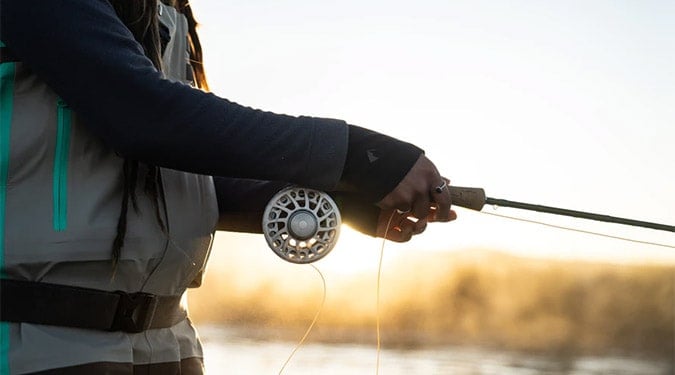
This method is different from conventional fishing, which utilizes a weighted line with either live bait or a lure. The trajectory is the same, and you cast with the lure following the line, but weights allow the bait or lure to hit the target mark and sink.
We won’t sugarcoat things. Fly fishing is challenging, but all good things come with practice.
If you’re just beginning fly fishing, our guide teaches you the basics, so you can feel confident and get started on the right foot.
Here’s what we will be covering:
Ready to learn about fly fishing? Let’s dive right in!
Fly Fishing Gear Guide
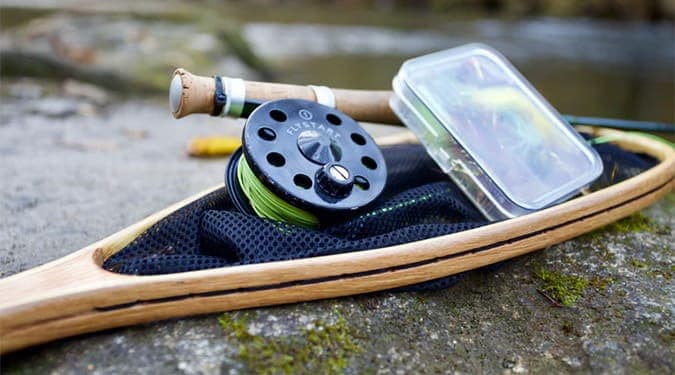
First things first—you’ll want to get your fly fishing equipment sorted. The good news is that you really don’t need much to start fly fishing, although you might be enticed and overwhelmed by numerous fly fishing tools at your local store.
Keep it simple and stick with this basic fly fishing gear:
Pro Tip: Don’t be afraid to spend a bit more money on quality equipment. Often, beginners will get frustrated when cheap gear doesn’t perform or breaks, discouraging them from continuing fly fishing.
Fly Rod & Reel
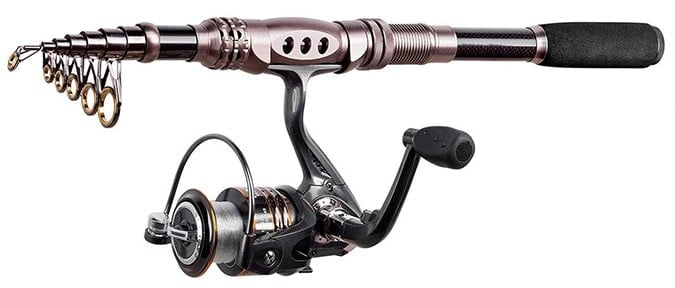
Two main pieces of gear you’ll need are the fly rod and reel. You can buy them separately or together as a combination. The perk of buying them together is that they are already matched, saving you time and money.
Fly rods come in a variety of weights and lengths, with prices determined by the material and quality of construction. A graphite rod is a good medium-range rod for beginners that is lightweight and strong to hold more resistance.
When choosing fly reels, go for one made from metal. It is also more durable than plastic reels, which tend not to last.
The most important factor to keep in mind when choosing your rod and reel is that the weight needs to be matched to ensure the best performance results. That’s why buying a combination set is a good idea for beginner fly fishing.
Fly Line
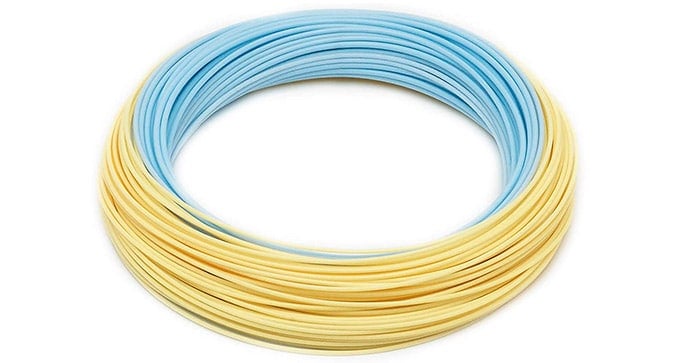
A fly line is a weighted line that, when cast, delivers the fly (lure) to the target location.
You’ll want to choose a fly line that matches your fly rod. For example, if you’re using a 5wt rod, match it with a 5wt line.
Make sure you choose a line designated for your fishing location, either freshwater or saltwater.
Also, take into account the temperature of the water, as there are different lines for this, such as tropical lines for warmer water.
Finally, your fly line should suit the fly you’re using. For example, if you’re fishing with a double nymph rig, it’s best to go with a nymphing line.
Other important fly line terms to know…
Fly Backing: This is the longest portion of the line that fills up the reel. This is used for extra length on a longer fish run.
Leader: This transitions the thick line to the tippet. The leader starts out thick to accommodate the thicker line but then narrows to keep the line from slapping the water and frightening the fish.
Tippet: This part of the line attaches to the fly on one end and the leader at the other end. The tippet allows the fly to rest on the water without the line being seen by the fish.
Flies

As stated above, flies are weightless lures designed to resemble insects and baitfish at different stages of their life cycles.
There are three main types of flies:
The best way to choose your flies is to chat with experts at your local fishing shop. They know the area and the types of flies that perform well.
With practice and a bit of luck, these brightly colored lures can attract trout, salmon, carp, tarpon, striped bass, bonefish, panfish, and more!
Essential Fly Fishing Accessories
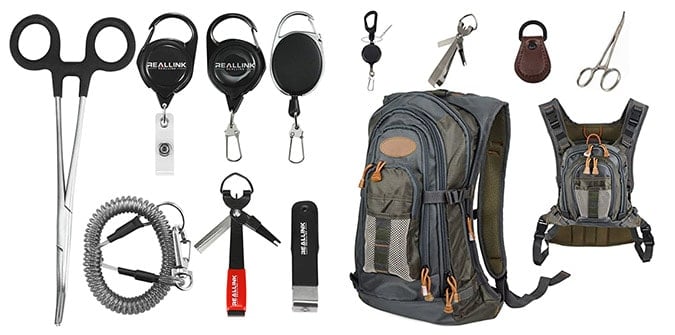
The fly rod, fly reel, and flies are technically all you need to get out on the water. But it’s also worth considering these extras to make your time on the water much more comfortable.
How to Cast Fly Fishing
After you’ve got your gear all set up, it’s time to learn fly fishing casting. As you begin, remember that fly fishing casting techniques are quite challenging compared to other fishing methods since you’re using a lightweight lure.
Start by learning how to bend or “load” the rod and stroking the rod. As a beginner, your goal is not to wave your arms like a windshield-wiper blade. Instead, picture the rod as your hammer.
Move your arm and wrist in a curved stroke that accelerates and then stops abruptly to cast the line towards the target. This acceleration and stop motion is the loading and unloading of the rod.
Here are some helpful fly fishing tips to get your casting basics down:
Pro Tip: You don’t have to start casting in the water. Take the time to practice in your backyard or a parking lot—anywhere with enough space for you to practice repetition conveniently.
The Best Locations for Fly Fishing
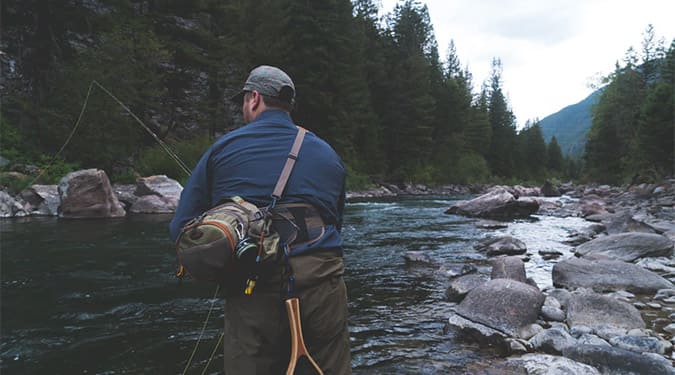
Since you’re just learning how to do fly fishing, one of the questions you might have is where to go to try out your new gear.
Truth be told, this is actually the perfect time to do some networking. Start at your local fishing shop to chat with locals. They can tell you the best spots to scope out or at least where to go as a beginner.
There are also plenty of local clubs and Facebook groups to join from around your area.
Choose spots that are close to home so you can get out there are fast as possible to practice. Try to stick to remote areas where there is plenty of space for all fishermen to enjoy.
It also helps to cast in an area where there isn’t too much foliage for the risk of getting your line tangled in a tree.
Remember that fishing spots are preferential, and you’ll find your favorites as you go along and try out more spots.
Additional Tips on Fly Fishing For Beginners
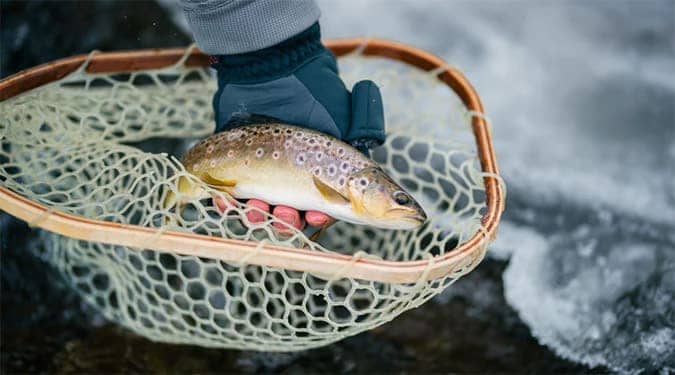
We’ll leave you with these final fly fishing tips:
Final Thoughts on How to Get Started in Fly Fishing
There you have it—the fly fishing basics. From learning fly fishing techniques to how to cast fly fishing rod, you’re now ready to go out there and give those fish a run for their money.
If you have any questions, you can always consult your local fishing store staff. They’ll help you figure out the best gear for your needs and give you advice on ideal fishing spots. Just remember that it all comes down to practice!
References & Resources:
- Fly fishing, National Park Service.
- What Are the Advantages of Fly Fishing?, Quora.
- The Mental Health Benefits of Fly Fishing, Medium.
- Intro to Fly-fishing, Iowa Department of Natural Resources
- 7 Psychological Benefits of Fishing With a Fly Rod, Take me Fishing.